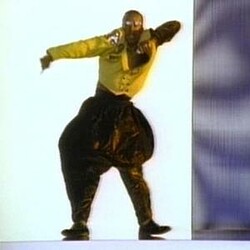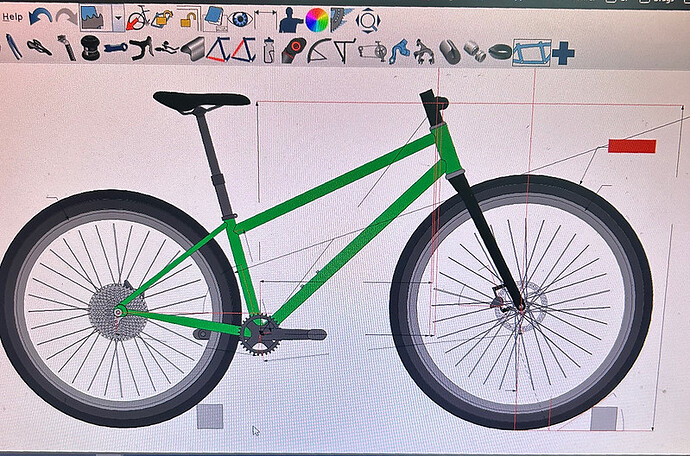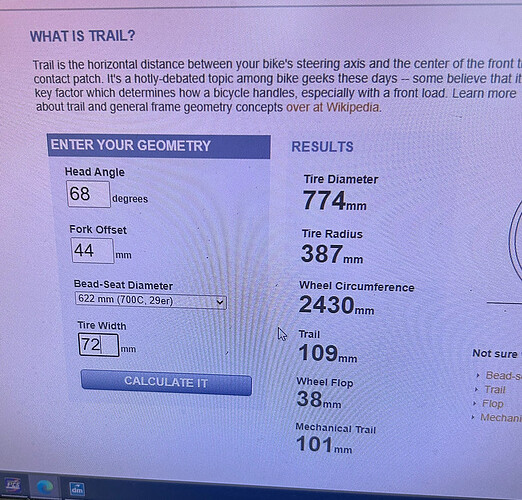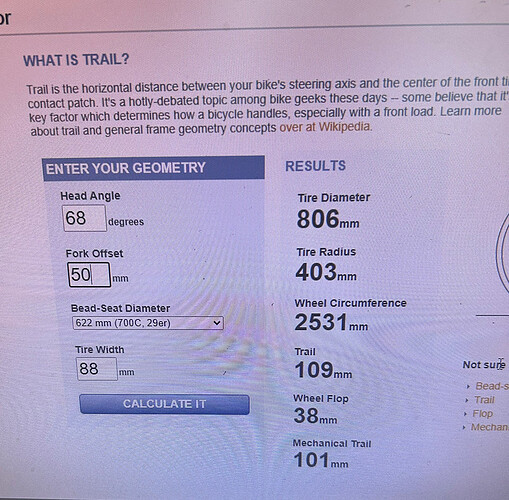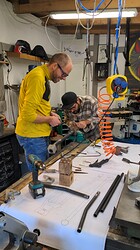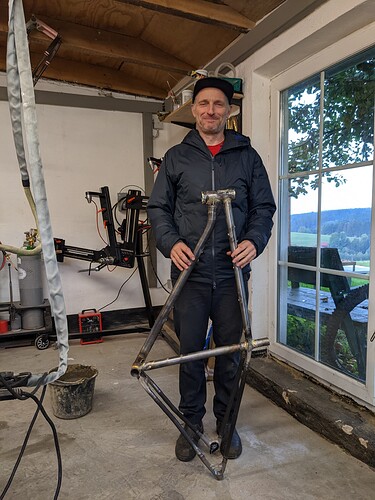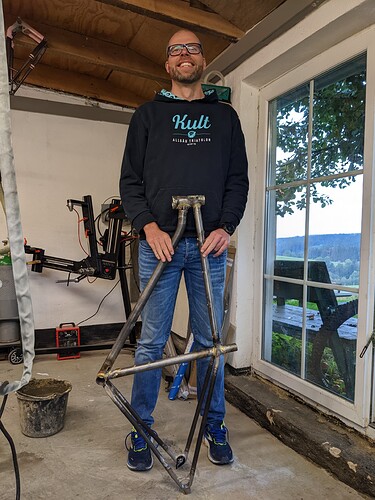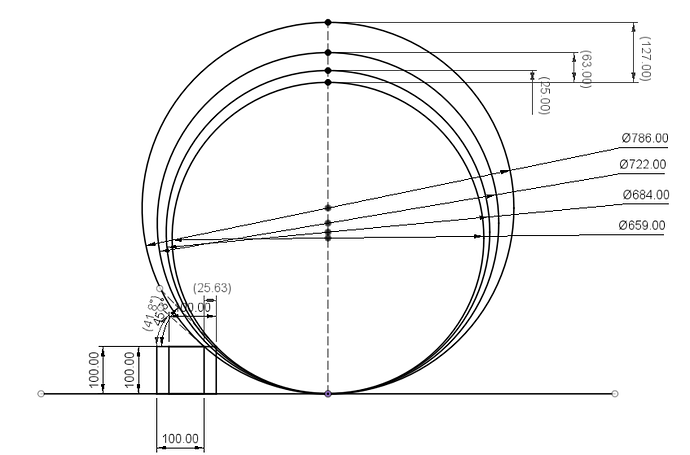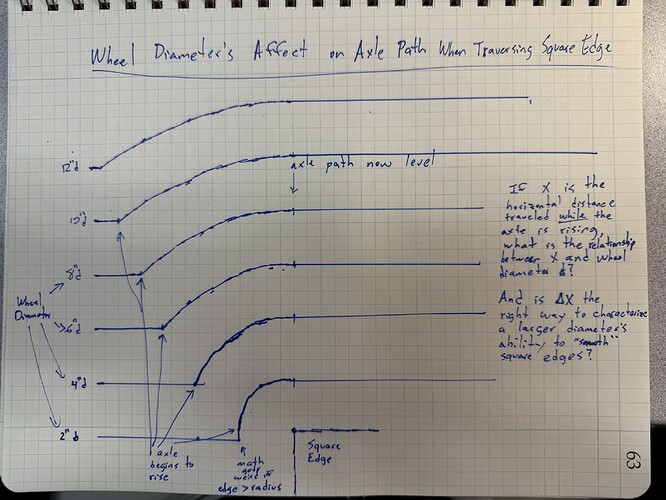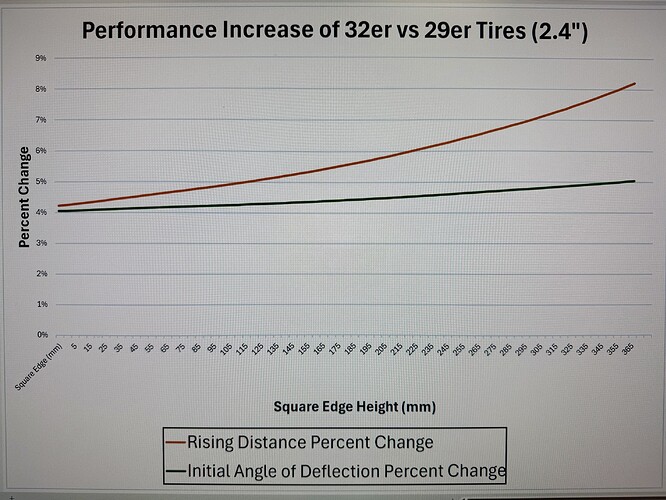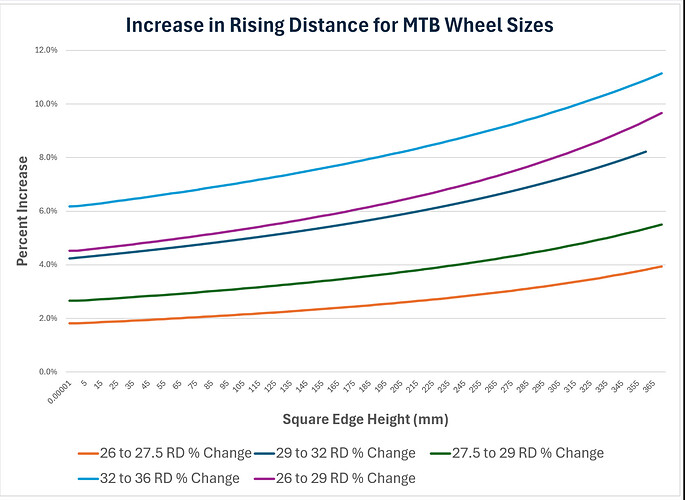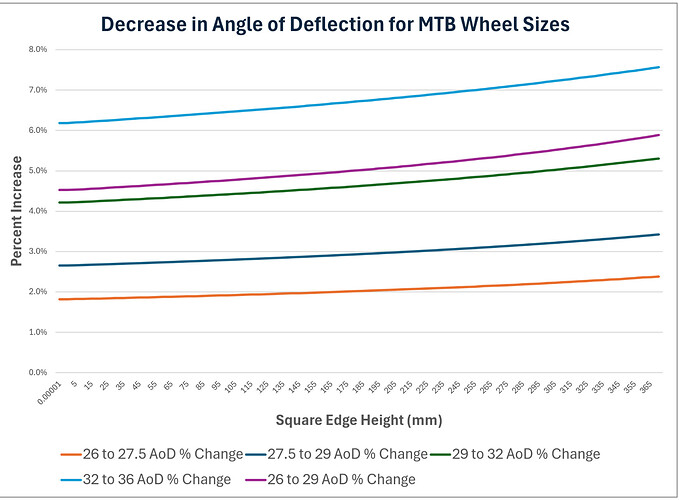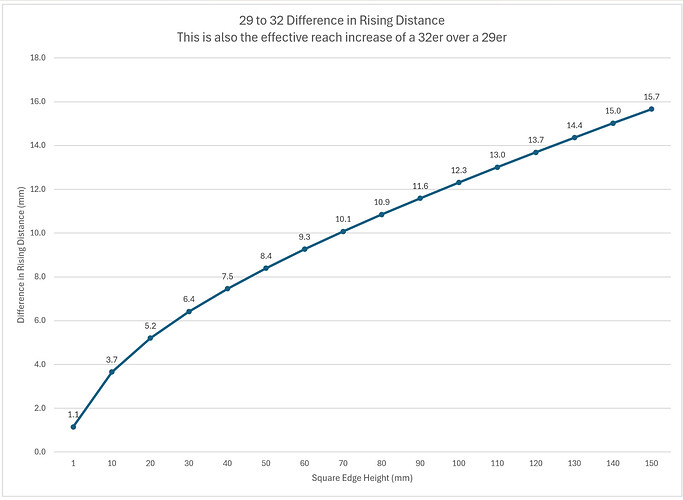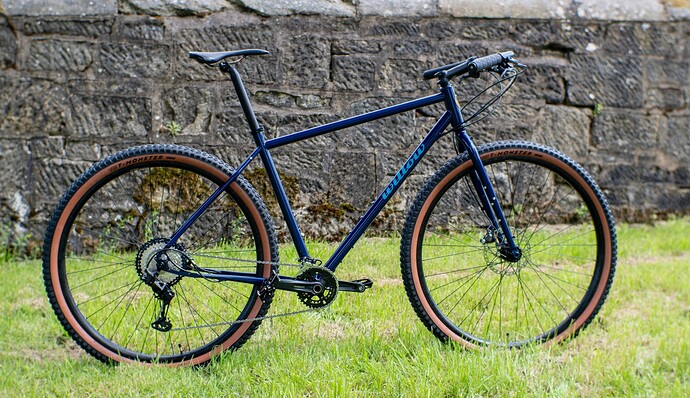32" seems like something that boutique builders can do cool things with, and possibly a better incremental step than 36"… Does anyone have any more insight than this PB article provides?
With aspen tires, and carbon rims coming available, it seems like gravel and xc platforms might benefit most. I’m mainly interested in seeing other builder’s thoughts around applications, geometry, if it is even going to be feasible for people under a certain height, etc.
If it fits then its a good option. The dick thing you’ll see is 5’6" XC types running 32" wheels with their bars up around their ears claiming the better roll over makes them faster. ![]()
Bike fit and geometry is mostly about proportions and balance. 32" will make that easier to build for the tallest customers. The big brands will hijack it though and make our lives difficult where the boutique/small/custom builder was the go to for very small and very big frames.
I’m 6’10” and I have ridden a 36” wheeled bike once offroad. It was cool, but I don’t see the advantage of a bigger wheel for mountain bikes, other than the bike looks better proportioned in xxxxl size. I wouldn’t mess with a new wheel standard for mtb until there’s a good, proven suspension fork available for it that’s widely adopted. I definitely would consider building a 32” wheeled gravel bike, if the tires available could be had in a variety of treads, and strong rims were affordable and readily available
I’m stoked on more choice but I kind’ve expect things will play out like this:
- 36" introduced - it’s the very best
- 32" introduced - it’s better than the very best
- 871.958mm introduced - because tall people are 1.083 fathoms tall according to Retul.
- Josh from Silca, in conjunction with Canyon, announces that the newest testing data conclusively shows that 26" tires are the fastest.
- UCI announces that MTB speeds are too fast. For safety reasons all racers are required to wear Hammer Pants to offset the speeds seen with 27.5" tires.
- 36" has been around for a while. No one, to my knowledge, has ever claimed it’s the very best. Quite the opposite actually - everyone I know of who’s dabbled with 36" wheels fully acknowledge that it’s a super niche thing and the available tyre choice is very sparse. There are a whopping two models with crappy rubber compound available, and only one with an acceptable offroad tread pattern.
- 32" has been around for a while as well. Not so much on 2-wheeled bikes, as the niche builders seem to have zeroed in on 36", but in the unicycle world 32" is a thing and has been for a while. Same thing here - I’ve not seen a single person or company in the 2-wheel world claiming it’s the best. Maybe you’ve seen some recent coverage that I have not?
- I’m not a fan of Retul and how they measure bike setups, but let’s not pretend that human anatomy does not exist on a spectrum. This “point” is akin to me telling tall people that they can only wear pants that are only so long that they can also fit a short person, because I as a shorter person would never wear pants longer than what fits me.
- No comment.
- Ok. I for one would actually like to see that.
Maybe I’m just a dry scandinavian who doesn’t understand your humour, but I have to say that I’m so sick of people’s knee-jerk reactions to certain things in the bike industry. What people don’t seem to understand is that it’s another choice, and not mandatory.
Those who want to stick with 26" can do that - they still have plenty of tyre choices. Granted, maybe not as much choice as a decade ago, but still more than two.
As far as I understand, there’s been an increase in average height in Europe. I’ve heard this from several sources, and a quick Google session confirms that the average Dutch male is 18cm taller today than they were 200 years ago. I know, 200 years is a long timeframe. But if the current average height for a male in the Netherlands is 184cm today (according to a second Google search), just imagine the portion of the population that is taller than that and thus may be stuck riding a bike that may not fit great or just looks silly proportion-wise.
Entirely anecdotal evidence from my end is that we get bike sizing requests from these massive blokes in the UK and around Europe on the regular. I’m talking guys with saddle heights above 920mm (36.2") who could absolutely get away with riding a bike with larger wheels and look perfectly normal doing so.
I’m just finishing up a visit to the Taipei Cycle Show, and what I think we should rise up against instead is all the absolute rubbish that’s coming out of the bike industry. I’m referring to the plethora of bikes that look like they’ve been designed by a toddler who can’t even draw a bicycle, and other bottom-quality crap.
I agree, choice is nice when it comes to something like bike proportions where people of varying heights can benefit. Other areas of life too much choice seems like more of a pain than it’s worth sometimes.
I want to avoid stirring the pot, but now you have me curious about these toddler-quality bike designs! lol
id welcome any info… im planning a 32/29 mullet at least…
https://www.pinkbike.com/news/video-32-tires-and-next-gen-tech-2025-taipei-cycle-show.html
messing around with bikecad, using an existing frame with a 29+/29 set up I only need a ~15mm ish shorter fork with a few mm more offset and it would work well I think! its all about the tyre though. ive ridden some 36" ers and the vee tyres are iffy and the nimbus terrible (still super fun though).
Because I had a pretty set schedule with people, brands and manufacturers I needed to met up with I didn’t bother taking any photos of the kooky stuff I saw.
Sat around having a lunch snack near the test ride track and saw so many bikes with truly awful geos and that spurred a conversation with my collegue speculating about how many of the bike designers and brand owners really ride bikes themselves. We agreed that the answer is “probably way too few”.
Saw some fancy MTBs with one-piece barstem combos and 100mm(!) of spacers, but I suppose that’s more of an assembly issue than design issue. Too many accessory brands making absolute junk.
I usually like to joke around saying that it’s almost impressive that some of these companies manage to produce goods that makes the end product worth less than the raw materials used to produce it.
bit more…
32-inch Zinn Clydesdale Pro Carbon MTB wheels - Singletracks Mountain Bike News
interestingly, for me, the ‘hand made’ (by some accounts) maxxis tyre has the 3 dimensional molded lettering on the side at the bead seat… seems unusual if its not from a mold?
https://images.singletracks.com/blog/wp-content/uploads/2025/03/IMG_20250131_111201.jpg
I had the pleasure of doing a collaboration with Ralf Holleis from Huhn cycles. We bult a 36ér for a super tall 2.1M (6’9") guy.
It was super interesting and I’m happy with the result. We were trying to have a bike that looked normal for him and rode well. The tire situation is terrible, but then again what can you do at that scale?
Having said all that… I think there is a lot of misunderstanding of what is happening with bigger wheels and bike handling/Fit.
I attached
to try to help visualize some of the issues.
As the wheels get bigger( Those diameters are 26,650b,29,32 with a 50mm tire) the whole bike moves back from the thing you are hitting. The approach angle doesn’t change that much , 4degrees accross the entire range. The rider is an about an inch farther back assuming (!!!) that you can keep all the other reach/fit stuff the same. What becomes obvious with this drawing is that the overall stack of fork length and headtube is getting a lot bigger compared to the changes in approach angle or where you are relative to the obstacle.
What this drawing doesn’t show unfortunately is how much heavier a bigger tire is. This may actually be a good thing up to a point. Heavier wheels have more inertia and this contributes to the whole ït just rolls over stuff easier"feeling. But it’s also fighting the playfuness that bikes can have.
I’m an old dude that has been mountain biking since the mid nineties. It’s been fun to watch the progressions and side tangents that happen. I am really taken by the crazy things that are happening to package 29er wheels and 150mm forks for people under about 5’10"/178cm.
I think @Daniel_Y should consider trying to test a wheel tire combo that has similar angular moment of inertia to the bikes he likes before deciding to get on the 32"party bus.
Hahn "Hot takes available"Rossman
I’m just a random guy (rather than a framebuilder), but I spend a lot of time thinking about custom bikes and bike design since I’m 6’7" and it is hard to find bikes that behave for me the same way they would for an average height human. Because of that I just did a deep dive that expands on @hahn_rossman’s thoughts above and posted on MTBR. I’ll duplicate that info here, since I’m curious if any framebuilder’s have thoughts on whether I’m thinking about this the right way.
I did some math. I’m not sure its useful math, but it helped me conceptualize how much of a difference going from a 29er to a 32er would make. I started by doodling the following to start to understand the affect wheel radius has on axle path when hitting something.
Based on the above, I realized that all of this could be calculated using some trig related to chord lengths.
Let me define some terms:
- Square Edge Height: The vertical height of an obstacle on the trail. Think running into a curb or a stair.
- Rising Distance: The horizontal distance the axle is traveling while the wheel/tire climbs onto the top of a square edge. A longer distance is better here because it is increasing the time the bike is moving upwards and therefore reducing the velocity you’re being pushed upwards at.
- Initial Angle of Deflection: The angle you’re being pushed upwards at when you first hit a square edge. This angle would be 0 degrees with no square edge, and 90 degrees if you’re hitting a wall. This angle is highest when you first hit the edge, and approaches zero as the wheel is almost on top of the square edge. I think this number may matter more than Rising Distance because it determines the feeling of hitting the Square Edge. As you move over the square edge the angle of deflection is decreasing, so in the real world you might only feel this initial angle of deflection, and then you’re basically unweighted as the wheel lifts over the edge.
So based on the above I figured out how to calculate the Rising Distance and Initial Angle of Deflection based on the wheel diameter and the square edge height. I’ll format these as Excel formulas so you can reproduce my work if you’d like.
- Rising Distance:
- For a 29x2.4: =SQRT(372^2-(372-[@[Square Edge (mm)]])^2)
- For a 32x2.4: =SQRT(404^2-(404-[@[Square Edge (mm)]])^2)
- Initial Angle of Deflection:
- For a 29x2.4: =90-DEGREES(ASIN(1-[@[Square Edge (mm)]]/372))
- For a 32x2.4: =90-DEGREES(ASIN(1-[@[Square Edge (mm)]]/404))
I then generated a chart based on the percent change between those values as you move from a square edge of 1-370mm. After you hit a square edge the same height as the radius of the 29er wheel you’re going straight up and the math doesn’t really make sense. Nobody is hitting 12"+ square edges without using techniques aside from wheel diameter to clear them, so really this chart is most relevant for smaller edges, probably in the 0-6" range (0-150mm).
The Rising Distance Percent Change is the increase in the rising distance on a 32" wheel, and the Initial Angle of Deflection Percent Change is the decrease in angle on a 32" wheel. In both cases a larger number is better.
(sorry for the literal screen shot… my work doesn’t like me uploading images)
So in conclusion, I suspect that a 32" wheel would reduce the effects of trail chatter by between 4% and 5%. Let me know if you agree with this logic… I’m curious what other people think. Also of note, a rough estimate of the increase in rim+spoke+tire weight going from 29 to 32 is probably 9%-12%… so the increase in rotating weight may be higher than the increase in performance.
I had someone ask about how this compares to other wheel sizes so I’ve expanded upon the charts.
Rising Distance: The horizontal distance the axle is traveling while the wheel/tire climbs onto the top of a square edge.
Initial Angle of Deflection: The angle the axle is pushed upwards at when a wheel first hits a square edge.
Based on those charts, I suspect 29 to 32 would be more dramatic than 27.5 to 29 but not as dramatic as 26 to 29.
After looking at this data some, I was also wondering if 90 degrees minus the “Angle of Deflection” gets you close to the ideal head tube angle for the wheel size. The table below has those angles for 35, 40, and 45mm edges, which probably are similar to most of the edges you’d want your bike to soak up on a trail. I’m not a mechanical engineer so I don’t understand if aligning these angles would result in all the force being directed along the axis of the fork, but it’s interesting to think about. It does seem like the difference in these angles between wheel sizes might align with the kind of HTA you’d want for each of them.
Angle Perpendicular to Angle of Deflection
| Square Edge Height | 26 | 27.5 | 29 | 32 | 36 |
|---|---|---|---|---|---|
| 35mm | 65.8 | 66.2 | 66.8 | 67.8 | 69.1 |
| 40mm | 63.8 | 64.3 | 64.9 | 66.0 | 67.4 |
| 45mm | 61.9 | 62.5 | 63.2 | 64.3 | 65.8 |
I think you are correct in your assessment, but what do I know? It is certainly interesting to see another outlier’s approach to thinking about bike design. I am 6’10, but I am not a maths person. I tend to view bicycles as arcane, borderline mystical, and with too many variables to be quantified in a meaningful way; especially by the likes of me.
I am curious what your takeaway is from this data and how it informs your quest for a bike that actually fits.
My specific area of interest is hardtail mountain bikes with long travel suspension forks. I have built maybe 8 frames. I took a wild shot in the dark to build the first few before settling into a design that works for the kind of riding available to me. I have not built a 32 or 36” bike because the components I would require are scarce (rims), junk (tires), or nonexistent (suspension forks). I strongly suspect that tire size is a secondary consideration for these kinds of bikes, but I don’t know and I probably will never because I don’t care to do the work to find out. I am very happy with the bike I have now with a 170mm fork and 29”x2.6” tires.
If I were focusing on a rigid bike ridden seated for long distances in a straighter line, I would be interested in 32-36” wheels if the parts were there, maybe because wheels get over bumps better, but mostly because they make it easier to get the contact points in the correct places for a very tall rider without relying on tall handlebars and a super long fork or a long head tube. The fickle nature of the bike industry and the dearth of parts required makes me leery of investing the time to design and build around them though. I tend to weigh the availability of components more greatly than what would truly be optimal.
I love to see a deep dive on an idea like this, I’m thinking about how far the contact patch (-es?) moves forward when you hit the same size bump with a bigger wheel and how much more dramatically the mechanical trail is going to change on larger and larger wheels.
i dont want to dilute this forum with foundation-less opinion but i have high expectations of 32". i remember seeing a friends nanoraptor mounted to wheels over in Minneapolis. it might even have been at SSWC there - i dont remember too clearly - around 2000 ish. even at 5’11" 29" wheels looked huge. before very long, anything less looked weird.
my first 29er frame - a kelly roshambo - i was stoked how the roll over, relative axle to bb drop etc made me feel so in the ‘frame’ . then 29x3.
as time has gone on even riders of less height than i have benefitted from the bigger wheels which makes me think that at my height at least a 32" front,29" rear is going to end up as ‘normal’ for hardtail or maybe even full suspension. for gravel, the roll over would be well worth it.
the bell shaped curve of height means there are so many more folk who can tolerate 32" compared to 36" (which is super fun to ride but they are massive!) that i think/hope it will take off.
someone somewhere has persuaded maxxis to do it so its coming. i hope it cements a position. an alu rim of decent spec is needed and a 2nd premium tyre choice.
my recent interest has been in pushing (my personal) hardtail geometry out from maybe the norm. it requires messing with stems of no more than 35mm length for my parameters and a long f-c gives plenty of space for the radius - which seems like it all fits together really nicely.
anyhoo, here’s hoping!
To me, this makes me think that there would be noticeable improvements, but not life changing ones. And it seems like the increase in weight and the decrease in available components might not be worth it… I don’t think it is a clear choice. At some point the increase in rotating weight would outweigh the rollover capabilities… where that threshold is depends on what you’re riding over and how often you’re accelerating and decelerating.
Minimizing acceleration events might make 32ers a more suitable wheel size for gravel bikes, since you’re maintaining a more steady speed, but how often do you really need more than a 29x2.2" tire on a gravel bike? I’d love to get a 32" gravel bike simply to make the bike look less goofy, but I don’t know if it would be a better bike than a 700c one.
This is a great question, and I think that the “Rising Distance” I’m describing is also the horizontal distance between the axle and the point where the contact patch hits. As a result, this number could be used to look at the differences between different wheel sizes.
I think overall, the number that really affects how you stable you feel going over bumps is the angle between your center of weight and your front contact patch. For taller riders, you could use a larger wheel size rather than a longer reach to improve this angle in order to keep the wheelbase in check. To me, that seems like the greatest potential advantage of a larger wheel size. I’ve generated two new charts below to explore this idea however, and it seems like the difference is in the 5-15mm range, so not huge.
I obtained some data for the overall diameter and widths for both the Maxxis Aspen and Vee Rubber T-Monster tyres.
Maxxis Aspen 32 x 2.4"
Overall Diameter: 814+/-5 mm
Section Width: 61+/-2 mm
That’s supposedly with a 30mm ID rim at 25PSI
Vee Rubber T-Monster 32 x 2.4"
Overall Diameter: 812 / 816mm
Knob Diameter: 777 / 779mm
Width: 60 / 62.5mm
Knob Width: 62.5 / 64.5mm
Dimensions taken on a 34mm internal width rim and at 22.5 / 50psi
BikeCAD template files attached below.
Just save into the “WHEELS” folder inside the BikeCAD config folder and relaunch the app.
32x2.4+T-Monster.bcad (2.5 KB)
32x2.4+Maxxis+Aspen.bcad (2.5 KB)
I know a lot of the hype on the 32" wheel is around MTBs but I’m really looking forward to having better tyre and rim selections for tall riders. Just being able to build proportional bikes for tall people. This is a 32" wheel off-road tour bike that I’ve just finished for someone that’s 200cm (6’6"). I like how it pretty much looks normal.

